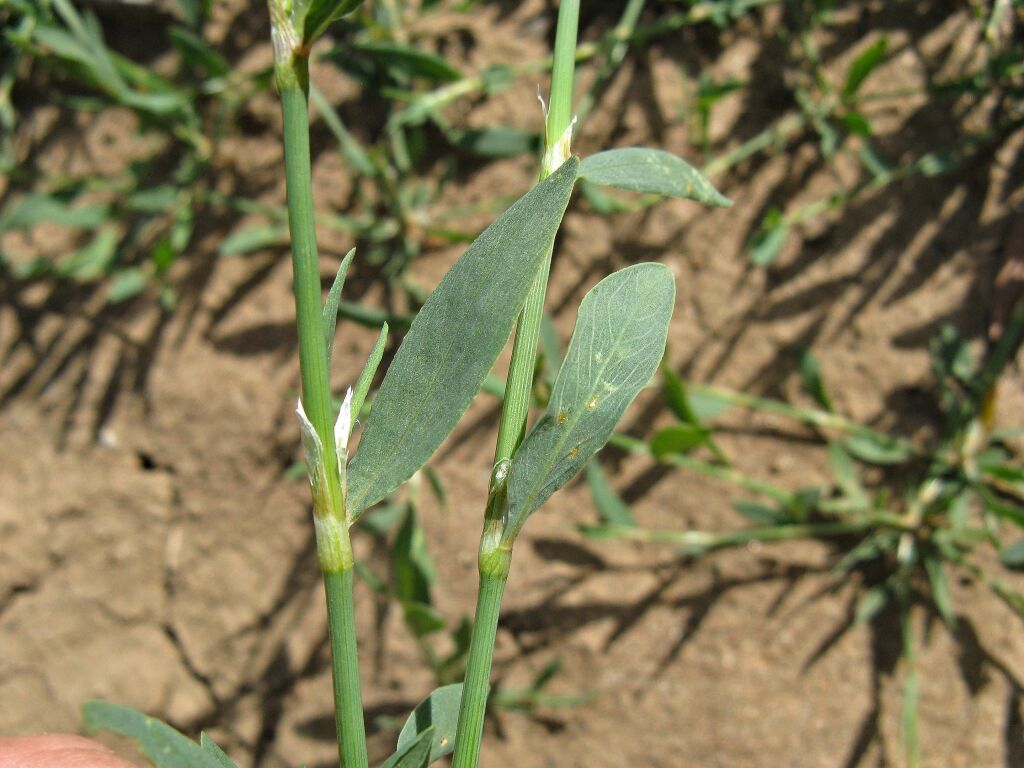Polygonum aviculare
L. HogweedDecumbent or prostrate annual, to c. 1.2 m diam. Ochreas 4–12 mm long, soon disintegrating. Lower leaves lanceolate to narrowly elliptic, 20–50 mm long, 5–18 mm wide, persisting until well after anthesis, margins flat or undulate, lateral veins obvious; leaves of lateral branches smaller than those of main stem(s). Flowers 1–5 in axillary clusters; perianth 2.5–3.5 mm long, the segments united for c. one-third their length, greenish with pink or white margins. Fruiting perianth not or barely enlarged. Nut with 3 more or less equal flat or concave faces, 2–3 mm long, dark brown, minutely roughened. Flowers mostly Dec.–May.
LoM, MuM, Wim, GleP, VVP, VRiv, MSB, RobP, MuF, GipP, OtP, WaP, Gold, CVU, GGr, DunT, NIS, EGL, EGU, WPro, HSF, HNF, OtR, Strz, MonT, VAlp. Naturalised in all States. Native to Europe, widely naturalised elsewhere. An occasional weed of pavements, roadsides, paddocks etc. almost throughout the State.
Walsh, N.G. (1996). Polygonaceae. In: Walsh, N.G.; Entwisle, T.J., Flora of Victoria Vol. 3, Dicotyledons Winteraceae to Myrtaceae, pp. 272–295. Inkata Press, Melbourne.
 Spinning
Spinning



